Japanese Canadian artist Kazuo Nakamura (1926–2002) was a co-founding member of the celebrated abstract artist group Painters Eleven. Through diverse bodies of work, Nakamura sought to reveal the universal laws of nature. August, Morning Reflections is an important example of the landscape paintings that are among Nakamura’s most recognizable and popular works. It is a view across a lake to the forest on a distant shore, and its complexity stems from the delicate pattern of reflections of the trees and sky in the water.
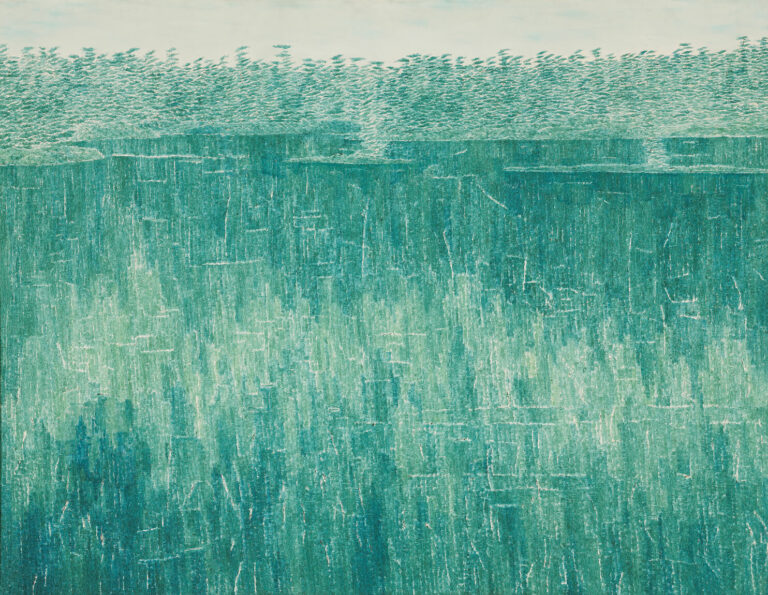
Oil on canvas, 93.7 x 121.5 cm, National Gallery of Canada, Ottawa
Nakamura had been creating landscapes since his internment years, and this painting borrows many conventions that date from that time, such as a high horizon line and the use of reflections. By 1960, however, reflections on water seem to take on an increasing importance as symbols of another reality underlying our visible world. Nakamura explicitly includes the word “reflections” in the title of his landscapes, and they become a dominant theme in his subsequent still lifes and Block paintings such as Structure, Two Horizons, 1964.
Here the artist employs his signature blue/green colour, which combines the lush green of the foliage with the blue of the water and ultimately the sky. This palette is typical of the group of landscapes August, Morning Reflections belongs to. The result tends to be almost monochromatic, a quality Nakamura ascribed to Japanese art. Nakamura’s technique—the feathery application of short strokes of colour—combines with bare areas of primed canvas to produce remarkable variations in the colour.
This Spotlight is excerpted from Kazuo Nakamura: Life & Work by John G. Hatch.
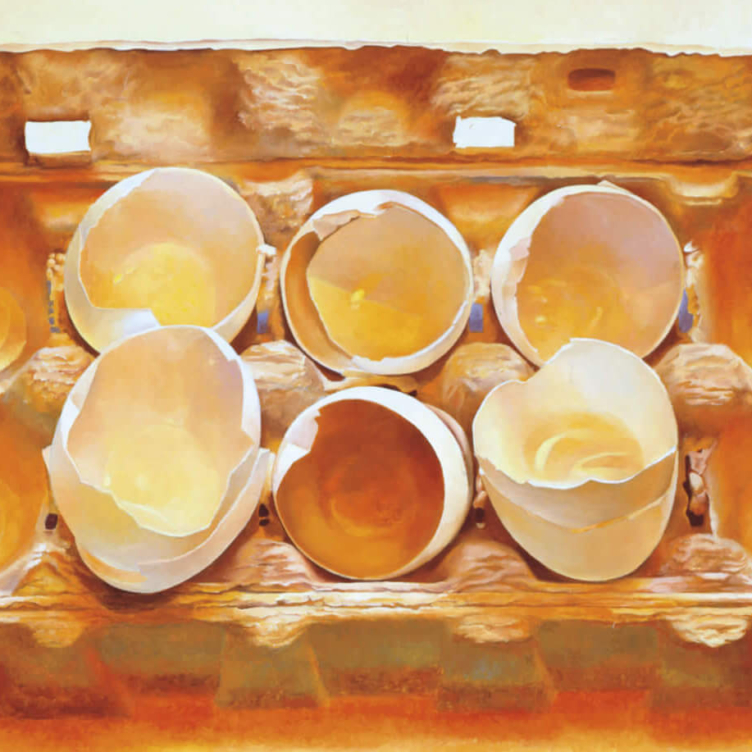 The Weight of Absence
The Weight of Absence
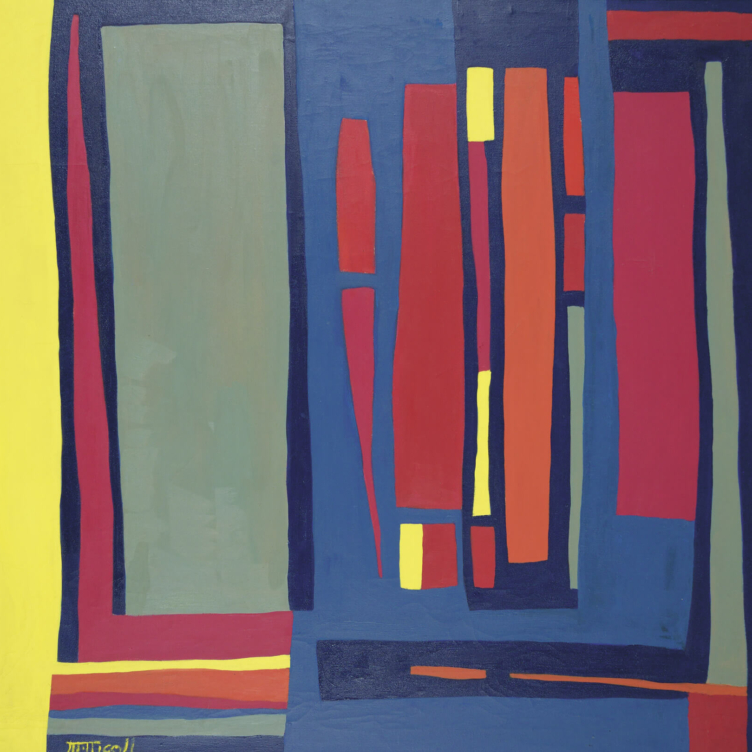 Abstract Alberta
Abstract Alberta
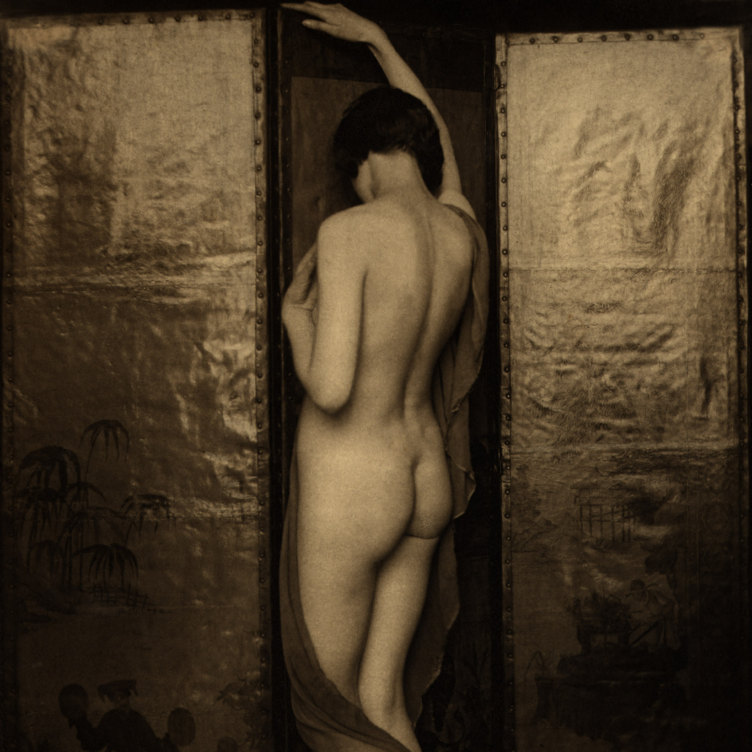 The Art of the Body
The Art of the Body
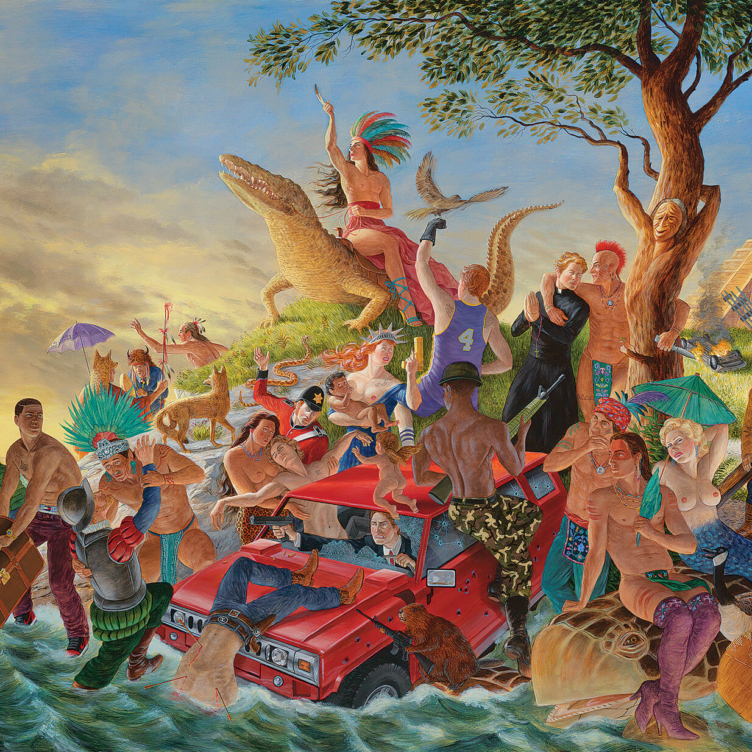 Rococo Riff
Rococo Riff
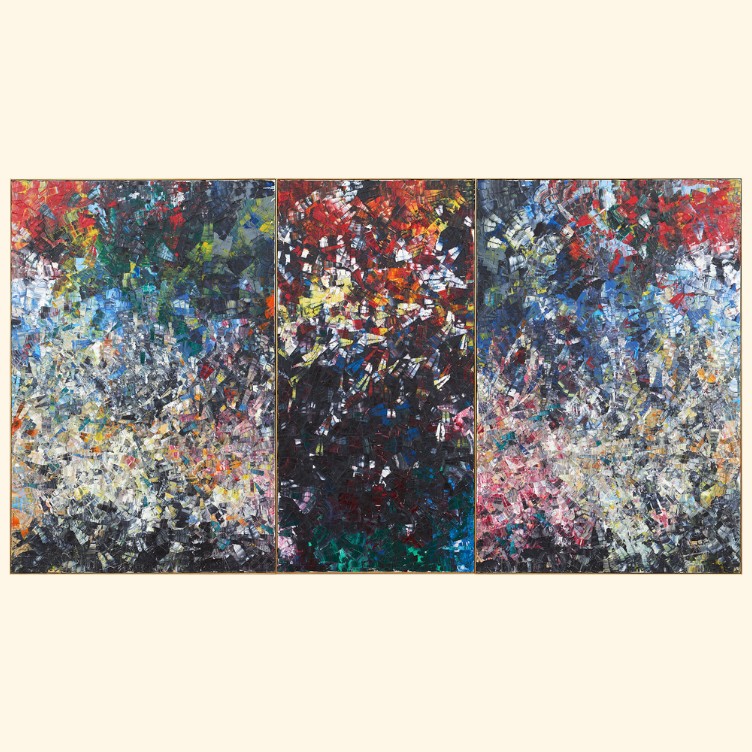 In Memory of Monet
In Memory of Monet
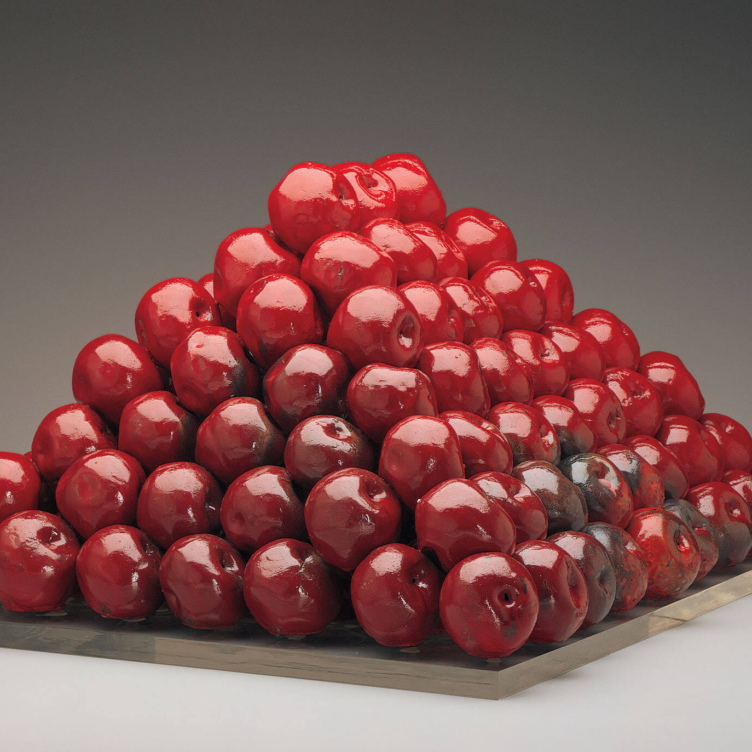 Pyramid Scheme
Pyramid Scheme
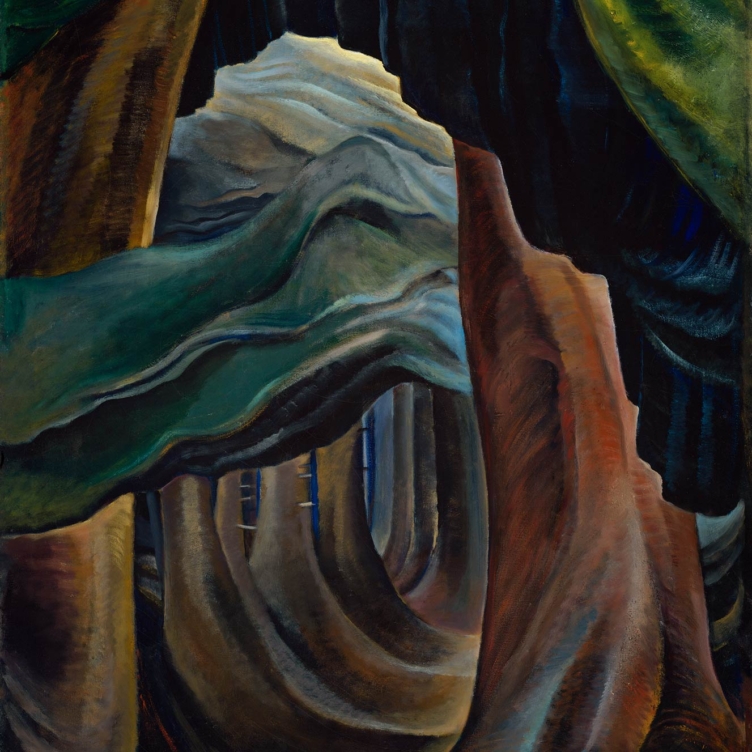 Transportive Trunks
Transportive Trunks
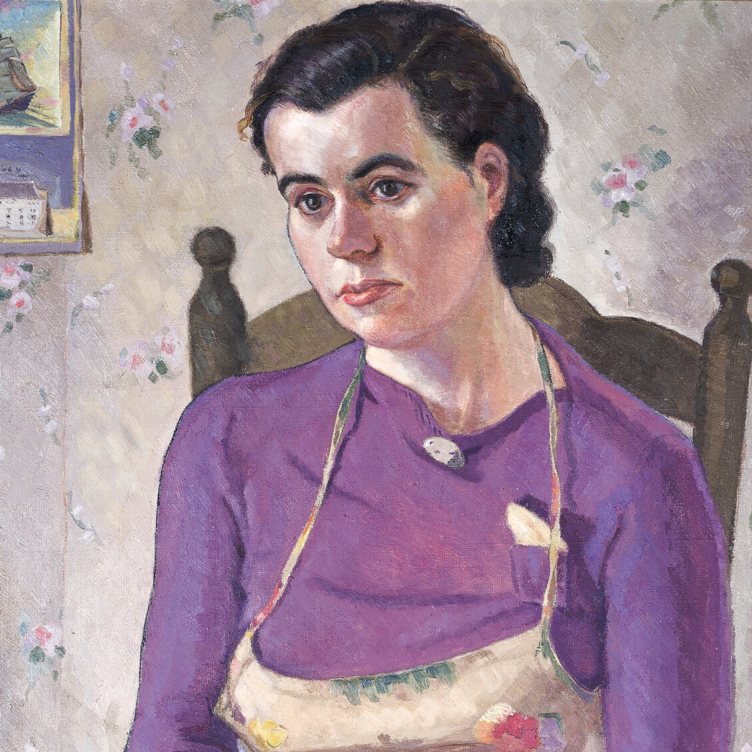 The Military Mate
The Military Mate
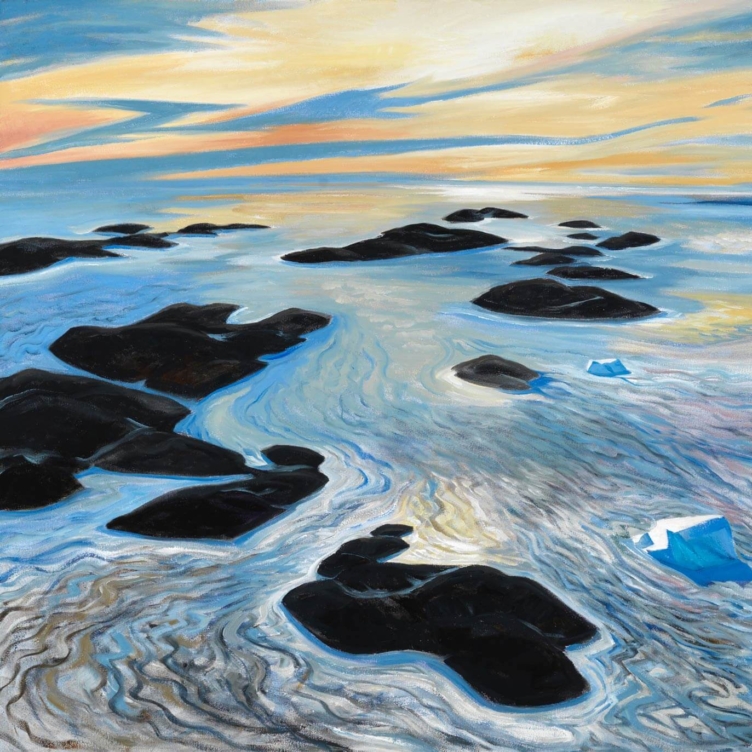 Looking Up on the World
Looking Up on the World
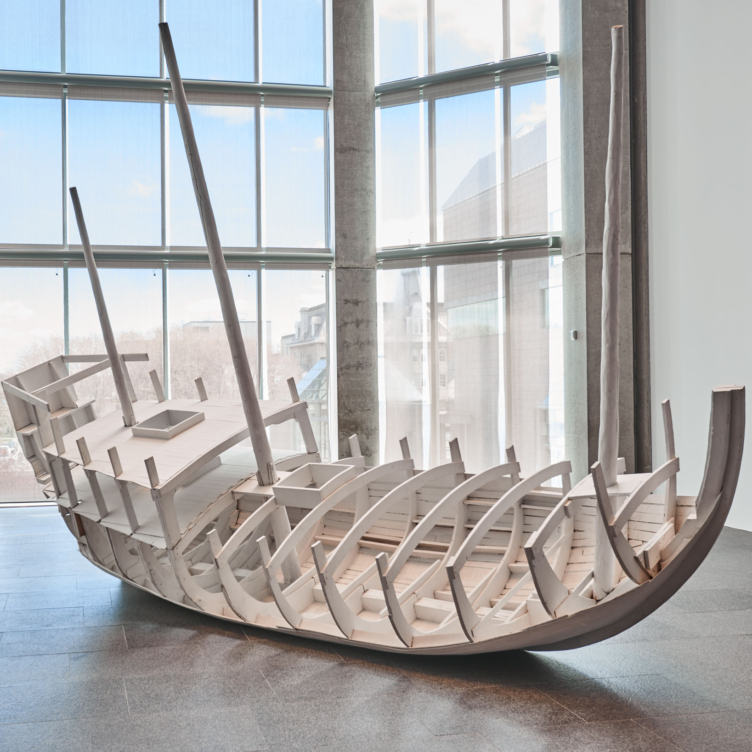 Vessel of Despair
Vessel of Despair
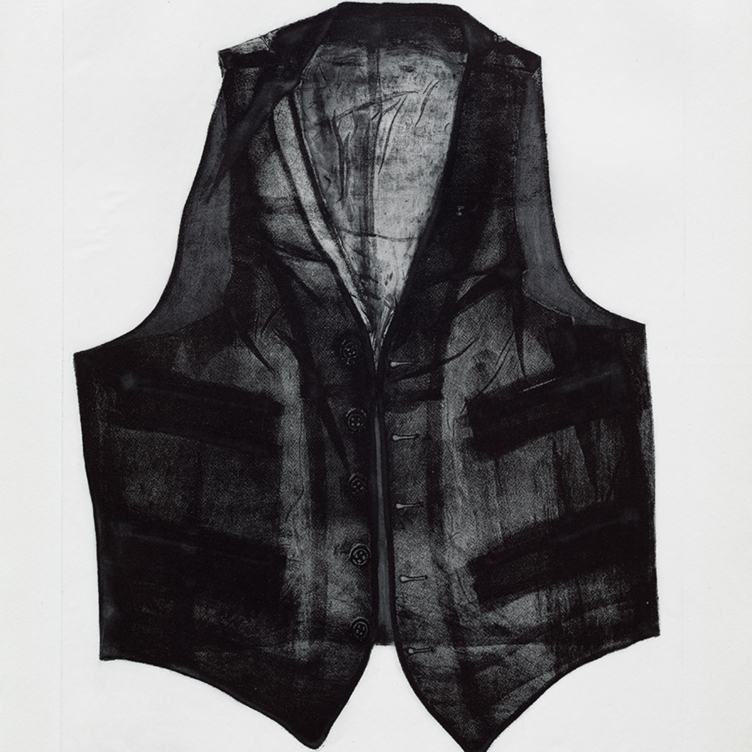 Layers of Meaning
Layers of Meaning
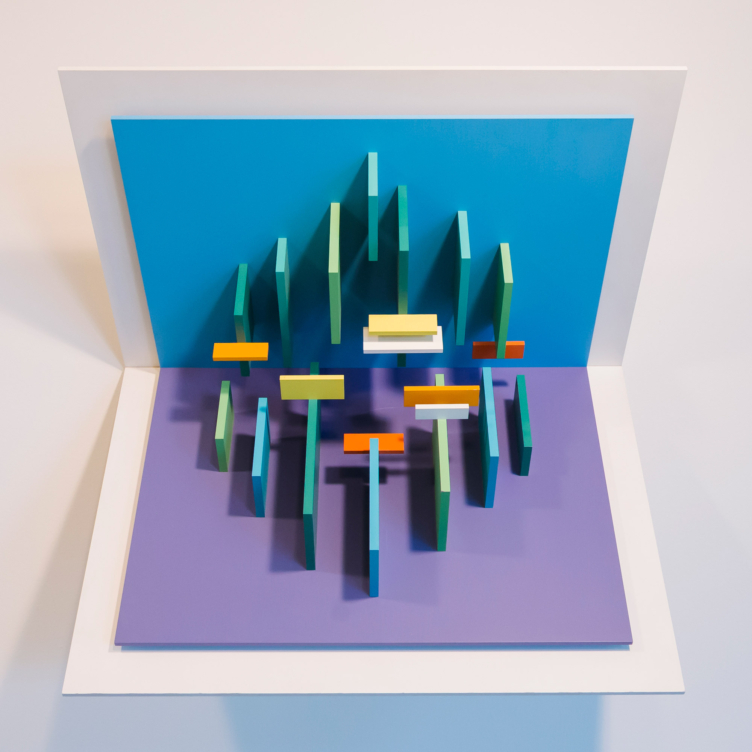 In Parallel to Nature
In Parallel to Nature
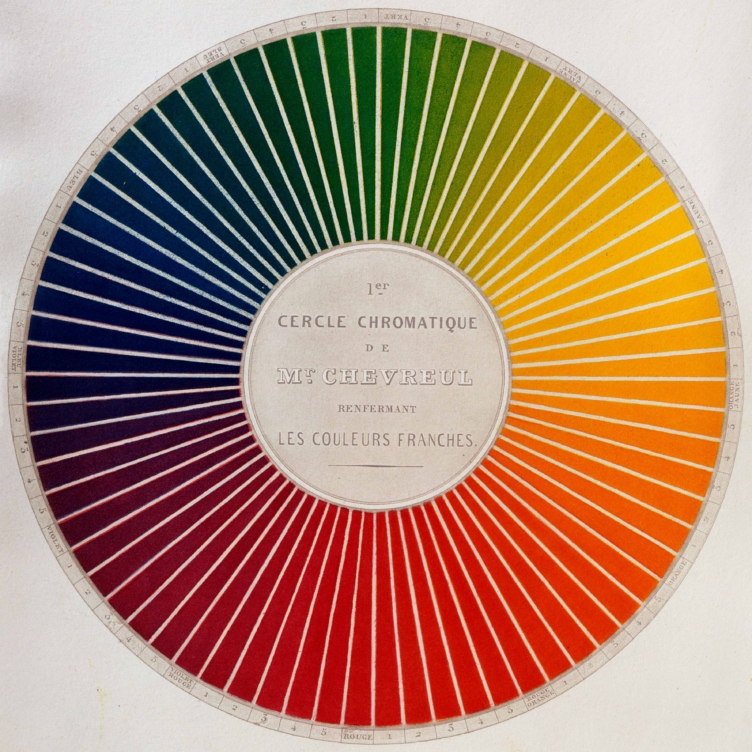 Wheel of Fortune
Wheel of Fortune
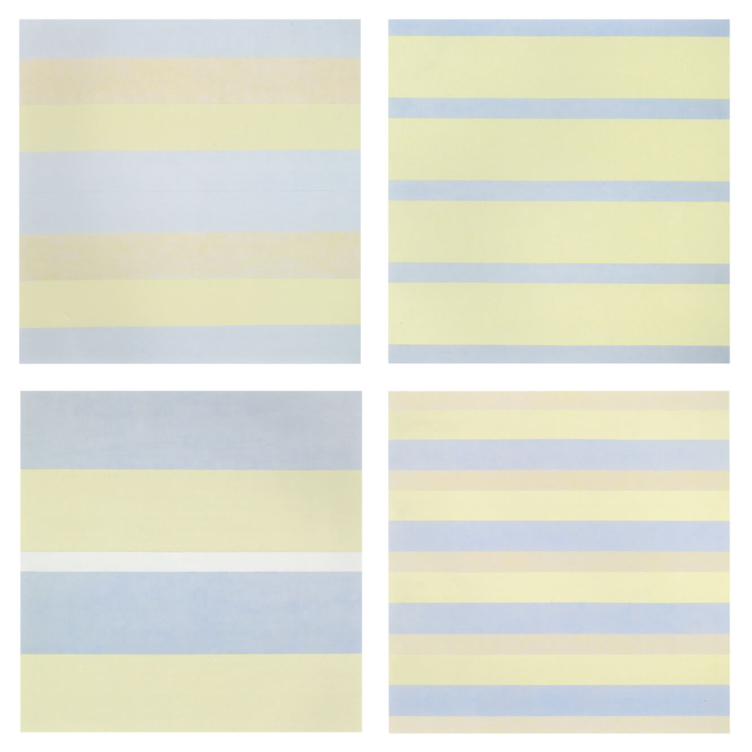 Paintings after emotional states
Paintings after emotional states
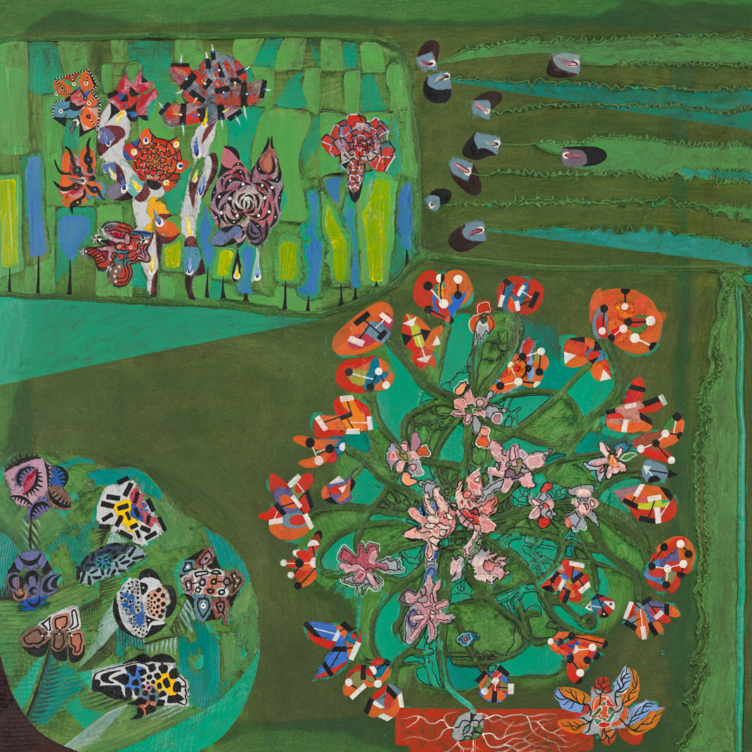 Garden of Delight
Garden of Delight
 Stitching the Archives
Stitching the Archives
 A Working-Class Hero
A Working-Class Hero
 Imagining Entangled Futures
Imagining Entangled Futures
 Bridging Far and Near
Bridging Far and Near
 Soft Power
Soft Power